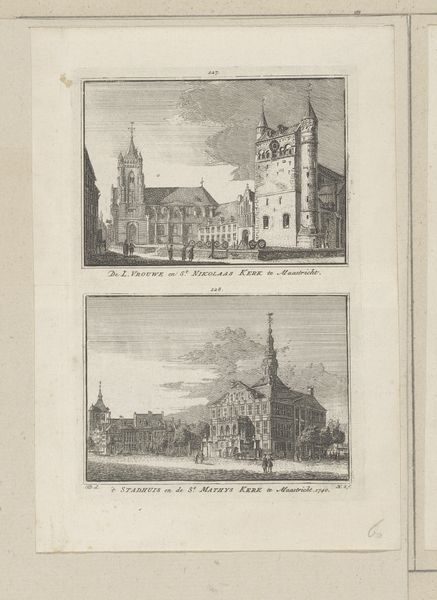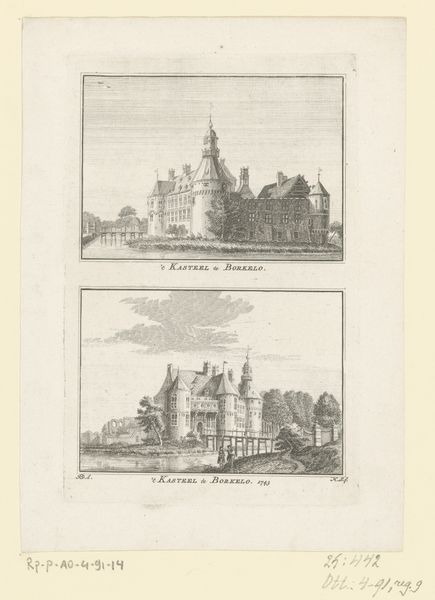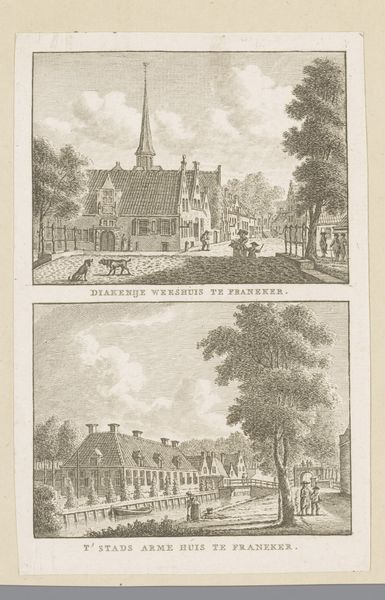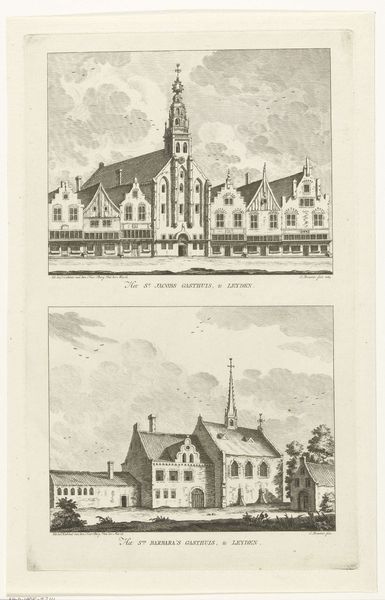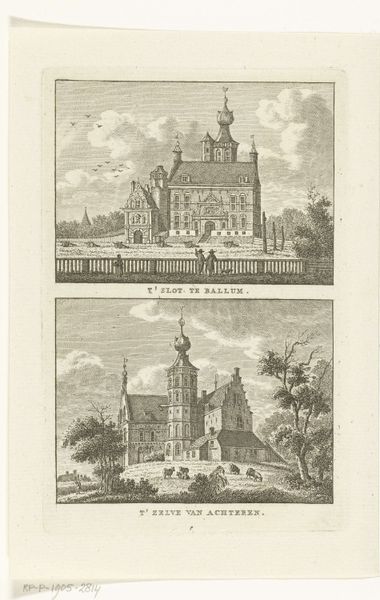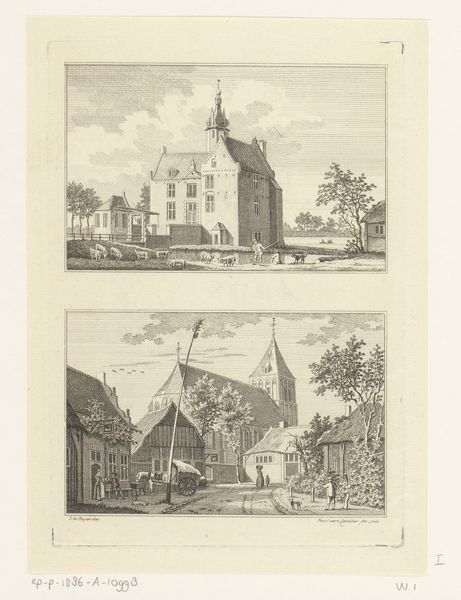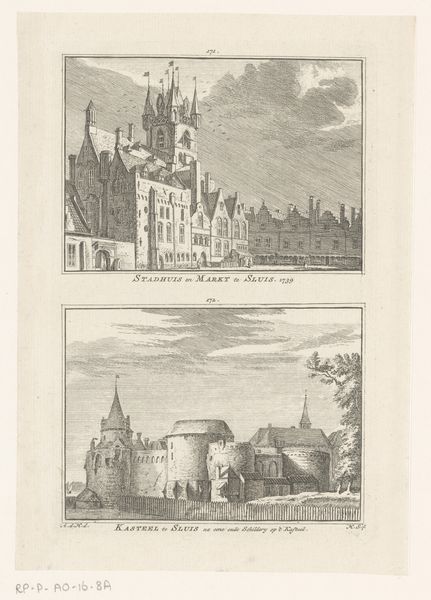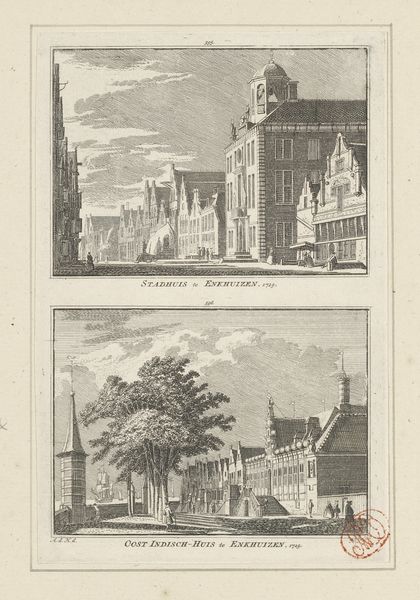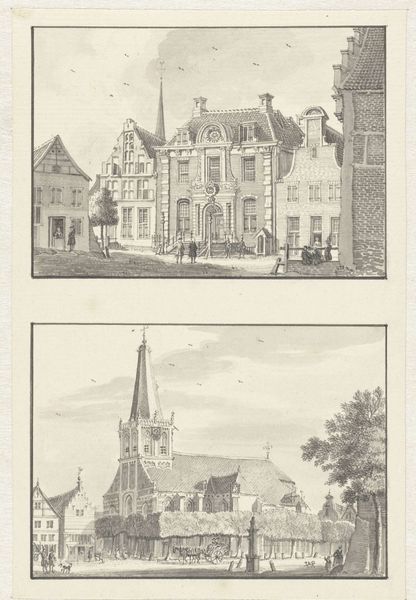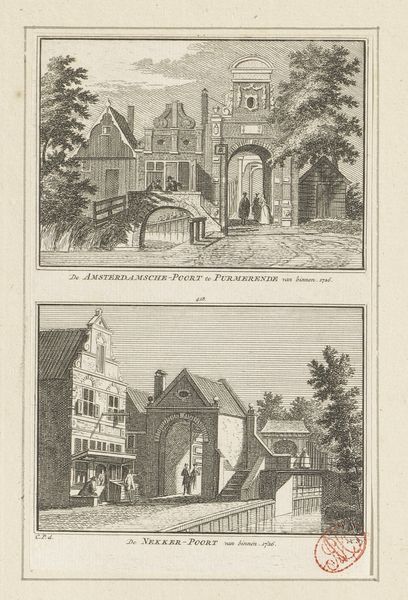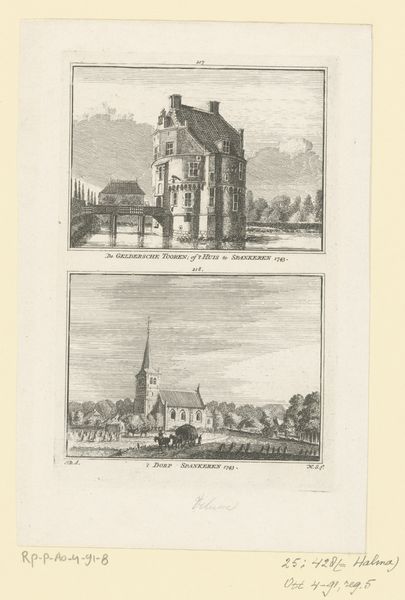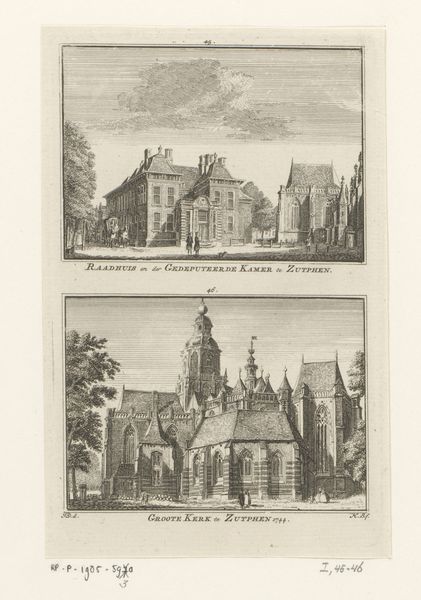
drawing, paper, engraving, architecture
#
drawing
#
baroque
#
dutch-golden-age
#
landscape
#
paper
#
cityscape
#
engraving
#
architecture
Dimensions: height 168 mm, width 105 mm
Copyright: Rijks Museum: Open Domain
Curator: Here we have Hendrik Spilman’s “Gezichten op Huis het Park te Arnhem, 1744,” created sometime between 1745 and 1774. It combines drawing and engraving on paper. The Rijksmuseum is its current home. Editor: My initial feeling is of meticulous detail; the architecture is painstakingly rendered, but the light seems very muted, almost austere. Curator: Indeed, Spilman, working in the Dutch Golden Age and Baroque styles, certainly prioritized architectural accuracy. The materials speak to that era—drawing and engraving were key methods for disseminating images, acting as visual records, you know, almost like a very detailed photograph before photography. The print allowed it to be replicated, democratizing the image for broader consumption. Editor: I'm drawn to the almost dreamlike quality that emerges from its details. I can see how the architecture, especially that stepped gable and central tower, are signifiers of status and ambition of the residents in Arnhem society. Water elements appear both like protection and a means of transportation in an intricate relationship. I feel as if it creates layers of interpretation which point to this cultural memory and the building’s presence. Curator: Good point. While the grand design alludes to social standing, don’t overlook the paper itself, a valuable commodity. The very act of creating and distributing such images, showcases networks of skilled labour from papermakers to printers to engravers all active for wider access to knowledge. It offers a small window into 18th-century market. Editor: The perspective gives it a distant and idealized feel for what Arnhem society must have perceived and felt as the reality for social-economic classes at that time. Curator: Looking at this interplay between the means of representation and their meanings in the depicted structure as power symbol of 18th-century in the Netherlands certainly grants the historical context in new, fascinating insight. Editor: Agreed; its symbols certainly evoke reflection upon a city life of class and cultural resonance for us today.
Comments
No comments
Be the first to comment and join the conversation on the ultimate creative platform.

